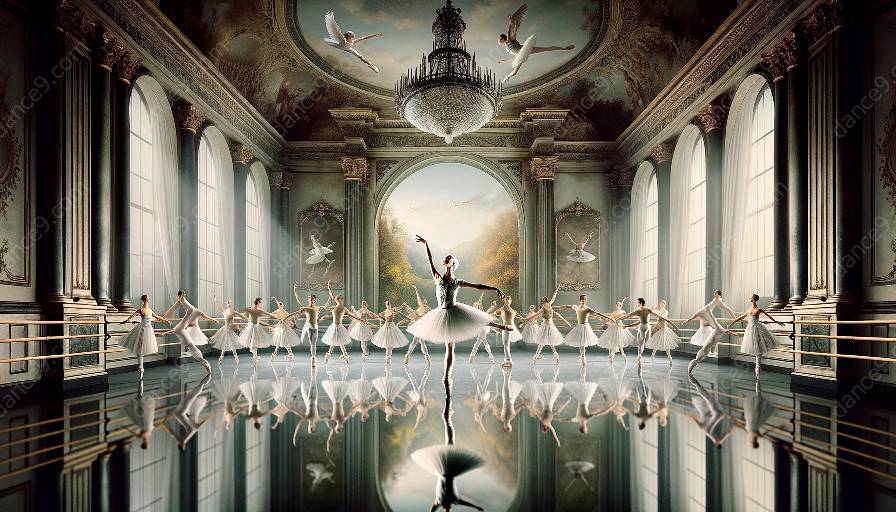Ballet, with its graceful and captivating movements, is a timeless art form that has been captivating audiences for centuries. At the heart of this intricate dance style is the art of choreography, which involves the arrangement and composition of dance movements to create a stunning visual and emotional experience.
Choreography in ballet is a multifaceted and dynamic discipline that requires a deep understanding of dance technique, musicality, storytelling, and spatial relationships. It is the art of transforming music into movement and transforming movement into an exquisite narrative that captivates the audience.
The Role of Choreography in Ballet
Choreography plays a vital role in ballet as it is the medium through which the choreographer can communicate and express their artistic vision. It allows the choreographer to create a rich tapestry of movement that tells a story, conveys emotions, and showcases the technical prowess of the dancers.
Choreography is not simply about creating sequences of steps; it involves the meticulous arrangement of bodies in space, the interplay of light and shadow, and the creation of visually stunning tableaus. It is a delicate and precise art that requires a keen understanding of the capabilities and nuances of the human body in motion.
The Creative Process of Ballet Choreography
The creative process of ballet choreography is a deeply immersive and collaborative endeavor. It begins with the choreographer conceptualizing the narrative, emotions, and theme they wish to convey through movement. This may involve drawing inspiration from a variety of sources, such as literature, music, history, or personal experiences.
Once the conceptual groundwork is laid, the choreographer collaborates closely with the dancers to craft movement sequences that highlight the technical prowess of the performers while also conveying the emotional depth of the narrative. This collaborative process often involves experimentation, refinement, and a deep understanding of the physical capabilities and artistic sensibilities of the dancers.
The Connection Between Ballet Choreography and Performing Arts
Ballet choreography is intricately connected to the broader world of performing arts, particularly dance. It serves as a bridge between music, storytelling, and movement, uniting these elements to create a seamless and captivating artistic expression.
Through the art of choreography, ballet becomes a dynamic and multidimensional form of expression that transcends words and connects with audiences on a profound emotional level. It merges the technical precision of dance with the emotive power of storytelling, resulting in a breathtaking display of human creativity and artistry.
Conclusion
Choreography in ballet is a mesmerizing blend of creativity, precision, and storytelling. It is a form of artistic expression that transforms music into movement and movement into emotion. Through the art of choreography, ballet transcends the boundaries of traditional performance and becomes an immersive and deeply moving experience for both the performers and the audience.
Topic
Techniques and Principles of Ballet Choreography
View details
Innovation and Creativity in Ballet Choreography
View details
Cultural and Social Influences on Ballet Choreography
View details
Challenges and Ethical Considerations in Ballet Choreography
View details
Choreographing Group Sequences in Ballet Performances
View details
Spatial Arrangement and Impact in Ballet Choreography
View details
Role of Costumes and Props in Ballet Choreography
View details
Intersection of Ballet Choreography and Other Dance Forms
View details
Expressing Narrative and Emotions through Ballet Choreography
View details
Balancing Tradition and Innovation in Ballet Choreography
View details
Safety and Well-being in Ballet Choreography Practice
View details
Collaborating with Dancers and Performers in Ballet Choreography
View details
Technical Aspects of Ballet Dance and Choreography
View details
Influences and Inspirations in Ballet Choreography
View details
Cultural and Social Themes in Ballet Choreography
View details
Ethical Considerations for Choreographers in Ballet Productions
View details
Questions
What are the basic principles of choreographing for ballet?
View details
How does choreography evolve with different ballet styles?
View details
What are the key elements to consider when choreographing a ballet piece?
View details
How does choreography impact the portrayal of characters in ballet performances?
View details
What role does music play in choreographing ballet routines?
View details
How do choreographers create unique and innovative movements for ballet productions?
View details
What historical influences have shaped ballet choreography?
View details
What are the challenges of choreographing for large-scale ballet productions?
View details
How does choreography contribute to expressing narrative and emotions in ballet performances?
View details
What techniques are used to choreograph group sequences in ballet performances?
View details
How do choreographers strike a balance between tradition and innovation in ballet choreography?
View details
How does spatial arrangement affect the impact of ballet choreography?
View details
What role does choreography play in communicating cultural and social themes in ballet?
View details
What are the ethical considerations for choreographers in ballet productions?
View details
How does choreography influence the use of costumes and props in ballet performances?
View details
What are the connections between ballet choreography and other dance forms?
View details
How do choreographers approach the creation of solo performances in ballet?
View details
What are the psychological aspects involved in ballet choreography?
View details
What collaborative processes are involved in creating ballet choreography?
View details
How does choreography contribute to the technical aspects of ballet dancing?
View details
What are the main differences between classical and contemporary ballet choreography?
View details
How do choreographers incorporate storytelling into ballet choreography?
View details
What are the cultural influences on ballet choreography?
View details
How do choreographers ensure the safety and well-being of dancers during rehearsals and performances?
View details
What are the business and management considerations for choreographers in the ballet industry?
View details






































